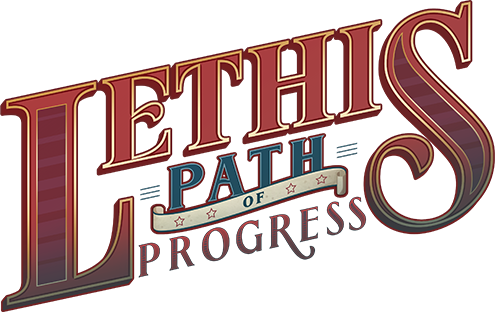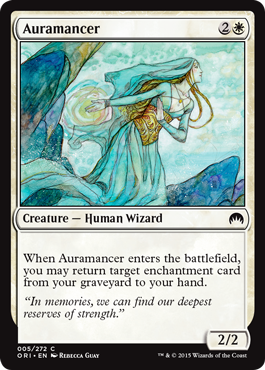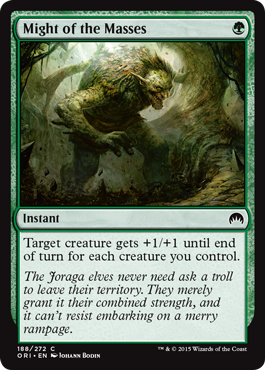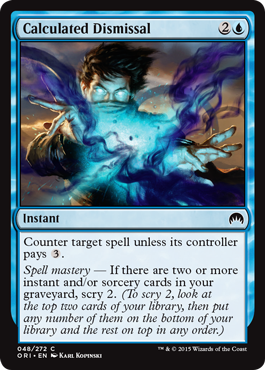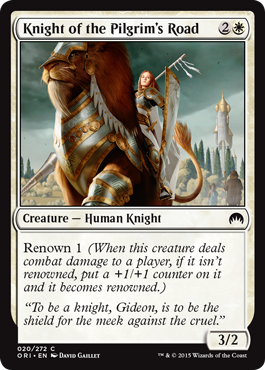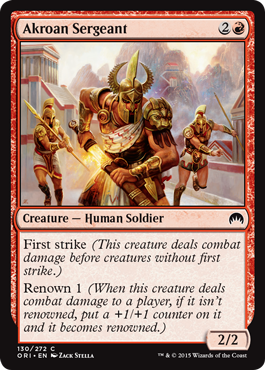While generally I don't recommend jumping into games while they are in beta or on Steam Early Access, I have had a fairly decent track record with a few such games over the past few months. And one of the best things about participating in such games is that there is often a fairly quick cycle of new updates, breathing new life into the game in a way that rarely happens once it has been released.
In fact, there have been four such major updates to some of my favorite games. Today, I'll take a look at two of them:
1. Offworld Trading Company recently updated to Beta 5, bringing with it a host of new changes. These include new units, new music, some new campaign features, new art assets, and some balancing tweaks to some of the black market activities. While still very much in Early Access, the game is already very playable, and definitely comes highly recommended.
2. Another fantastic indie game is Darkest Dungeon, which recently released their Corpse and Hound update. The focus, not surprisingly, is on the Houndmaster, which is a new hero class, and the presence of monster corpses, that now linger once a foul denizen has been slain, complicating your ability to deal with the remaining foes. This update also includes lots of combat tweaks and balance, some changes to the way that madness and character quirks function, and some smaller changes to some of the other hero classes. With the final release slated for October, this game is quickly nearly completion.
Anyway, I am away at GenCon most of this week, and still trying to finish up Part 2 of my Standard Pauper review of Magic Origins. So that's it for today. See you next time.
Thursday, July 30, 2015
Tuesday, July 28, 2015
MPDC Season 29 Champion
As of yesterday, another Season of Monday Pauper Deck Challenge is now in the books. It's been a long and somewhat chaotic season, as we've seen attendance dip and slowly begin to recover, with participation numbers in the high teens fairly consistently now. It's also been a season where I haven't had much of a chance to play, which I definitely regret. But as I talked about last time, I've simply had quite a bit on my plate.
But today I want to extend a well-earned congrats to rremedio1, who piloted an excellent new build to a 1st place finish in our season capstone event. Long time players of Standard Pauper may remember the dominance of the "America" archetype, named for its combination of Red, White, and Blue. Now reborn as Jeskai wedge, it was this strong combination that captured the trophy. Let's take a look at his decklist:
This is the ultimate in value and control. It packs a full 10 copies of various draw spells, a grip of permission spells, some token generators, and 11 removal spells, over half of which exile the targeted creature (for which the deck derives its name). It also uses Mnemonic Wall for ground defense and spell recursion, and ekes out Lifegain from every spell with Student of Ojutai. The Sideboard also contains additional resources for removal and permission, as well as the excellent Scouring Sands to help deal with aggressive tokens.
With how aggressive the format is right now, it's impressive that such a Control oriented deck not only won the event, but was undefeated along the way. And huge props to rremedio1, who demonstrated some serious skill to accomplish such a feat!
Magic Origins looks to be bringing lots more options along these same lines, so it will be interesting to see if this deck continues to succeed in the weeks ahead. I certainly intend to test it out!
But today I want to extend a well-earned congrats to rremedio1, who piloted an excellent new build to a 1st place finish in our season capstone event. Long time players of Standard Pauper may remember the dominance of the "America" archetype, named for its combination of Red, White, and Blue. Now reborn as Jeskai wedge, it was this strong combination that captured the trophy. Let's take a look at his decklist:
Exiler
1st place in MPDC 23 Worlds by rremedio1
| Creatures 2 Mnemonic Wall 2 Student of Ojutai 4 cards Other Spells 3 Anticipate 3 Divination 3 Flurry of Horns 3 Last Breath 3 Lightning Strike 3 Magma Spray 3 Nullify 3 Treasure Cruise 2 Pillar of Light 2 Rise of Eagles 2 Voyage's End 1 Cancel 1 Weave Fate 32 cards |
Lands 6 Island 4 Evolving Wilds 4 Swiftwater Cliffs 3 Tranquil Cove 2 Wind-Scarred Crag 3 Mountain 2 Plains 24 cards
Sideboard
4 Negate 3 Scouring Sands 2 Disdainful Stroke 1 Pillar of Light 1 Voyage's End 1 Magma Spray 1 Last Breath 1 Lightning Strike 1 Cancel 15 cards |
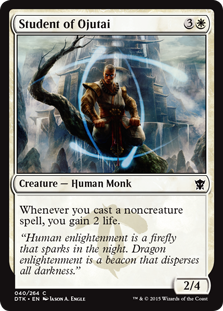
|
This is the ultimate in value and control. It packs a full 10 copies of various draw spells, a grip of permission spells, some token generators, and 11 removal spells, over half of which exile the targeted creature (for which the deck derives its name). It also uses Mnemonic Wall for ground defense and spell recursion, and ekes out Lifegain from every spell with Student of Ojutai. The Sideboard also contains additional resources for removal and permission, as well as the excellent Scouring Sands to help deal with aggressive tokens.
With how aggressive the format is right now, it's impressive that such a Control oriented deck not only won the event, but was undefeated along the way. And huge props to rremedio1, who demonstrated some serious skill to accomplish such a feat!
Magic Origins looks to be bringing lots more options along these same lines, so it will be interesting to see if this deck continues to succeed in the weeks ahead. I certainly intend to test it out!
Sunday, July 26, 2015
A Quick Update
Real life seems to be conspiring against me.
I have been traveling all this past week, and today was the first day I actually had the chance to devote to anything online. Not only that, but I ended up spending more time in preparation to leave for my trip than I had anticipated. All that to say, I'm at least a week behind on my writing schedule, including both blog posts and the two remaining installments for my Standard Pauper review of Magic Origins. And with Worlds tomorrow, company in town, and GenCon this weekend, it just keeps coming. As a result, updates from me will probably be hit and miss over the next week or so until I get some margin back in my life. Thanks for your patience, and I promise that things will be back to normal soon.
I have been traveling all this past week, and today was the first day I actually had the chance to devote to anything online. Not only that, but I ended up spending more time in preparation to leave for my trip than I had anticipated. All that to say, I'm at least a week behind on my writing schedule, including both blog posts and the two remaining installments for my Standard Pauper review of Magic Origins. And with Worlds tomorrow, company in town, and GenCon this weekend, it just keeps coming. As a result, updates from me will probably be hit and miss over the next week or so until I get some margin back in my life. Thanks for your patience, and I promise that things will be back to normal soon.
Thursday, July 23, 2015
Common Design: Why Commons Become Uncommons
I've spent quite a bit of time on my blog writing about the design of Commons, particularly in reference to the New World Order design philosophy and how it affects what we will see at Common in future sets. As is typical with the release of a new set, there is a certain subset of the Pauper community that laments these design constraints, since it typically means that few if any new cards will actually see play in Classic Pauper.
For Magic Origins, at least one player picked up on the fact that several former Commons (Knightly Valor, Sigiled Starfish, and Totem-Guide Hartebeest, among others) saw print as Uncommons in the set, and took this as further proof that New World Order is taking away all the complexity out of print at Common. In response to one such post, a player by the name of casual_melvin posted this response (which I have edited slightly just for clarity):
A) Cards often shift rarities from set to set, sometimes up sometimes down. Sometimes this reflects a change in how WotC handles rarity. More often it reflects the differing needs of the new set. Scion of the Wild was reprinted as a common in Modern Masters 2015 despite two previous printings at rare. This was acceptable because Modern Masters has less restriction on complexity than Standard legal sets.
B) Origins is a core set, and core sets have always had less complexity available than expansion sets. Shimmering Grotto was printed as a common in 2 expansion sets before being printed as an uncommon in M14. Then a functionally equivalent card, Unknown Shores, was printed at common in Theros.
C) Specifically, printing Sigiled Starfish at uncommon in Origins allows them to make a new common card of similar complexity. WotC gives itself a "complexity budget" for use on commons. A certain number of commons each set are allowed to do things that commons can't do too much without unbalancing limited. They use this budget to craft limited play around the set/block's themes so that always powerful things like removal and evasion aren't always taking center stage.
C2) Whether a card like Sigiled Starfish is printed at common or uncommon has less to do with the card itself than how it plays with the cards in the environment. Apparently, while Origins does have scry, it is less of a focus than it was in Theros, so as a repeatable scry-er, Sigiled Starfish fits better at uncommon.
As you're evaluating new sets, these are very great points to keep in mind. Thanks for reading.
For Magic Origins, at least one player picked up on the fact that several former Commons (Knightly Valor, Sigiled Starfish, and Totem-Guide Hartebeest, among others) saw print as Uncommons in the set, and took this as further proof that New World Order is taking away all the complexity out of print at Common. In response to one such post, a player by the name of casual_melvin posted this response (which I have edited slightly just for clarity):
A) Cards often shift rarities from set to set, sometimes up sometimes down. Sometimes this reflects a change in how WotC handles rarity. More often it reflects the differing needs of the new set. Scion of the Wild was reprinted as a common in Modern Masters 2015 despite two previous printings at rare. This was acceptable because Modern Masters has less restriction on complexity than Standard legal sets.
B) Origins is a core set, and core sets have always had less complexity available than expansion sets. Shimmering Grotto was printed as a common in 2 expansion sets before being printed as an uncommon in M14. Then a functionally equivalent card, Unknown Shores, was printed at common in Theros.
C) Specifically, printing Sigiled Starfish at uncommon in Origins allows them to make a new common card of similar complexity. WotC gives itself a "complexity budget" for use on commons. A certain number of commons each set are allowed to do things that commons can't do too much without unbalancing limited. They use this budget to craft limited play around the set/block's themes so that always powerful things like removal and evasion aren't always taking center stage.
C2) Whether a card like Sigiled Starfish is printed at common or uncommon has less to do with the card itself than how it plays with the cards in the environment. Apparently, while Origins does have scry, it is less of a focus than it was in Theros, so as a repeatable scry-er, Sigiled Starfish fits better at uncommon.
As you're evaluating new sets, these are very great points to keep in mind. Thanks for reading.
Tuesday, July 21, 2015
Lethis Path of Progress
Smart game developers make a habit of giving away games to full-time streamers in the hopes that their audience will discover the game and in turn lead to sales. It would be fascinating to me to see some actual numbers on how that works out. In any case, it certainly seems to be working for me, as I have recently stumbled upon yet another enjoyable indie game known as Lethis - Path of Progress.
Lethis - Path of Progress is a city-builder along the lines of Caesar, Zeus, and Pharoah with a decidedly zany Victorian Steampunk setting. Like those games, your purpose is to grow a city from its humble roots to a thriving city. But unlike more traditional city-builders such as the Sim City franchise, in Lethis this process is much less about zoning and population growth and much more about carefully balancing a variety of services and ensuring that your citizens have access to the right resources at the right time. This is accomplished by what is generally referred to as the "walker" system, where each resource building spreads it services by means of a "walker" who will follow your transportation routes for only a limited distance before turning around.
While at first your population consists of migrants who are happy to settle without any infrastructure, they'll quickly begin to make demands for a particular service. Provide it, and their homes upgrade to a slightly higher density, allowing you to increase your workforce and tax base without having to build more homes. These progress from simple access to food and water to more exotic needs like an exorcist to chase off ghosts, copper utensils for proper dining, a theater for endless entertainment, and newspapers to keep up with everything that's fit to print in the empire. And then there are the bourgeois, who have their own set of demands, which mostly consist of a small army of automatons to cater to their every whim. While these rich folk don't actually provide any workers, they do generate considerably more taxes.
The game includes both a tutorial and sandbox mode, but the heart of the game is a series of 26 missions across three difficulty levels, each presenting you with a different mix of terrain and available services by which you must meet the victory conditions. There is thus quite a bit of gameplay for your money.
Overall Lethis Path of Progress has proven to be an enjoyable diversion. Both the art and the music are excellent. The game is also simple enough once you get the hang of it, but each scenario feels like a unique puzzle that you have to solve. The exact mechanics of some of the services, such as balancing the number of wheat farms to windmills to bakeries in order to provide bread for your population, are not clearly marked out for you, forcing you to experiment and innovate as you move through the scenarios. Making sure to keep all of your walkers moving in such a way as to cover all your population can be quite daunting at times, especially when a misstep along the way can cause all your buildings to revert to a less dense status when a service is no longer being delivered properly. Despite its status as a full release, the game feels like it still has some polish missing; fortunately, its small but devoted development team is still hard at work on the game.
For $20 on Steam, I found Lethis - Path of Progress to be well worth the investment. If you enjoy city management games, particularly games like Caesar or Pharoah from many years ago, this is definitely worth picking up.
Lethis - Path of Progress is a city-builder along the lines of Caesar, Zeus, and Pharoah with a decidedly zany Victorian Steampunk setting. Like those games, your purpose is to grow a city from its humble roots to a thriving city. But unlike more traditional city-builders such as the Sim City franchise, in Lethis this process is much less about zoning and population growth and much more about carefully balancing a variety of services and ensuring that your citizens have access to the right resources at the right time. This is accomplished by what is generally referred to as the "walker" system, where each resource building spreads it services by means of a "walker" who will follow your transportation routes for only a limited distance before turning around.
While at first your population consists of migrants who are happy to settle without any infrastructure, they'll quickly begin to make demands for a particular service. Provide it, and their homes upgrade to a slightly higher density, allowing you to increase your workforce and tax base without having to build more homes. These progress from simple access to food and water to more exotic needs like an exorcist to chase off ghosts, copper utensils for proper dining, a theater for endless entertainment, and newspapers to keep up with everything that's fit to print in the empire. And then there are the bourgeois, who have their own set of demands, which mostly consist of a small army of automatons to cater to their every whim. While these rich folk don't actually provide any workers, they do generate considerably more taxes.
The game includes both a tutorial and sandbox mode, but the heart of the game is a series of 26 missions across three difficulty levels, each presenting you with a different mix of terrain and available services by which you must meet the victory conditions. There is thus quite a bit of gameplay for your money.
Overall Lethis Path of Progress has proven to be an enjoyable diversion. Both the art and the music are excellent. The game is also simple enough once you get the hang of it, but each scenario feels like a unique puzzle that you have to solve. The exact mechanics of some of the services, such as balancing the number of wheat farms to windmills to bakeries in order to provide bread for your population, are not clearly marked out for you, forcing you to experiment and innovate as you move through the scenarios. Making sure to keep all of your walkers moving in such a way as to cover all your population can be quite daunting at times, especially when a misstep along the way can cause all your buildings to revert to a less dense status when a service is no longer being delivered properly. Despite its status as a full release, the game feels like it still has some polish missing; fortunately, its small but devoted development team is still hard at work on the game.
For $20 on Steam, I found Lethis - Path of Progress to be well worth the investment. If you enjoy city management games, particularly games like Caesar or Pharoah from many years ago, this is definitely worth picking up.
Saturday, July 18, 2015
New Trophies for MPDC and SPDC Season 29
Today I want to give a huge shout-out to Standard Pauper player Jonder_qind, who took the time to create a design for trophies for Season 29 of both Monday Pauper Deck Challenge and Standard Pauper Deck Challenge. This week he sent me all 28 trophies, and I have now updated Gatherling so that we are all caught-up for this season. If you're a regular at either of these events, please express your thanks for the great job that he did.
So here they are, in all their glory. Enjoy!














So here they are, in all their glory. Enjoy!














Thursday, July 16, 2015
My Top 5 Reprints in Magic Origins, Part Two
Last time, I started discussing my Top 5 favorite reprints from Magic Origins. As is fitting for a set that is looking back to the origins of some of
the game's iconic Planeswalkers, Magic Origins features 42 reprints at
Common, not including the additional ones in the sample decks. As a reminder, I'm ignoring any reprints that we
currently already have in the Standard Pauper cardpool. So with that, let's take a look at the other three cards!
3. Auramancer is back yet again! With over 80 different Enchantments in the Standard Pauper cardpool right now, Auramancer brings some incredible value to the virtual battlefield. It returns removal Auras like Pacifism, Bestow creatures like Leafcrown Dryad, utility creature Auras like Mortal Obstinacy, or potent creatures buffs like Eternal Thirst. Combine this with Heliod's Pilgrim or Kruphix's Insight, and you've got the potential for a very powerful Enchantment based deck. But even if that's not your aim, simply getting back a card combined with a 2/2 creature for 2W is enough value for anyone to want to include this.
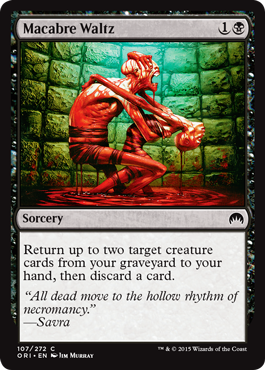 4. Macabre Waltz was last seen in the original Ravnica block, and while we already have a glut of other spells that return multiple creatures from the Graveyard, Macabre Waltz is a very welcome addition for two reasons. First, it's quite cheap at 1B; in fact, it's half the cost of Dutiful Return or other similar Commons! Second, it has significant synergy with both Delve and Spell Mastery, making it the perfect addition to a MonoBlack or Dimir Control deck. This isn't nearly as good in a more aggressive archetype, since you often won't have multiple creatures to return early. But in almost any other type of deck, this is well worth considering.
4. Macabre Waltz was last seen in the original Ravnica block, and while we already have a glut of other spells that return multiple creatures from the Graveyard, Macabre Waltz is a very welcome addition for two reasons. First, it's quite cheap at 1B; in fact, it's half the cost of Dutiful Return or other similar Commons! Second, it has significant synergy with both Delve and Spell Mastery, making it the perfect addition to a MonoBlack or Dimir Control deck. This isn't nearly as good in a more aggressive archetype, since you often won't have multiple creatures to return early. But in almost any other type of deck, this is well worth considering.
5. I discussed last time how Nantuko Shade is such a potent reprint due to all of the token generation that exists in the Standard Pauper cardpool. Another card that shines in that type of environment is Might of the Masses. While it has the potential to be a pretty mediocre Giant Growth, in a dedicated token build one can easily use this as your finisher, dealing anywhere from 6 to 10 damage all by itself. While not as good as it was in Rise of the Eldrazi without the accompanying Eldrazi Spawn tokens, I still anticipate this coming in and dealing massive amounts of damage to an unsuspecting opponent.
So those are my Top 5 reprints from Standard Pauper! What cards are you most excited about? Any that I missed?
3. Auramancer is back yet again! With over 80 different Enchantments in the Standard Pauper cardpool right now, Auramancer brings some incredible value to the virtual battlefield. It returns removal Auras like Pacifism, Bestow creatures like Leafcrown Dryad, utility creature Auras like Mortal Obstinacy, or potent creatures buffs like Eternal Thirst. Combine this with Heliod's Pilgrim or Kruphix's Insight, and you've got the potential for a very powerful Enchantment based deck. But even if that's not your aim, simply getting back a card combined with a 2/2 creature for 2W is enough value for anyone to want to include this.
 4. Macabre Waltz was last seen in the original Ravnica block, and while we already have a glut of other spells that return multiple creatures from the Graveyard, Macabre Waltz is a very welcome addition for two reasons. First, it's quite cheap at 1B; in fact, it's half the cost of Dutiful Return or other similar Commons! Second, it has significant synergy with both Delve and Spell Mastery, making it the perfect addition to a MonoBlack or Dimir Control deck. This isn't nearly as good in a more aggressive archetype, since you often won't have multiple creatures to return early. But in almost any other type of deck, this is well worth considering.
4. Macabre Waltz was last seen in the original Ravnica block, and while we already have a glut of other spells that return multiple creatures from the Graveyard, Macabre Waltz is a very welcome addition for two reasons. First, it's quite cheap at 1B; in fact, it's half the cost of Dutiful Return or other similar Commons! Second, it has significant synergy with both Delve and Spell Mastery, making it the perfect addition to a MonoBlack or Dimir Control deck. This isn't nearly as good in a more aggressive archetype, since you often won't have multiple creatures to return early. But in almost any other type of deck, this is well worth considering.5. I discussed last time how Nantuko Shade is such a potent reprint due to all of the token generation that exists in the Standard Pauper cardpool. Another card that shines in that type of environment is Might of the Masses. While it has the potential to be a pretty mediocre Giant Growth, in a dedicated token build one can easily use this as your finisher, dealing anywhere from 6 to 10 damage all by itself. While not as good as it was in Rise of the Eldrazi without the accompanying Eldrazi Spawn tokens, I still anticipate this coming in and dealing massive amounts of damage to an unsuspecting opponent.
So those are my Top 5 reprints from Standard Pauper! What cards are you most excited about? Any that I missed?
Tuesday, July 14, 2015
My Top 5 Reprints in Magic Origins, Part One
Part One of my Standard Pauper review of Magic Origins has been published over at PureMTGO, and I am hard at work on Part Two, which will cover all of the reprints in the set. As is fitting for a set that is looking back to the origins of some of the game's iconic Planeswalkers, Magic Origins features 42 reprints at Common, not including the additional ones in the sample decks. So I thought this week I would take a couple of posts and examine my top five favorite reprints from the set, at least from my initial evaluation. Also, just for reference, I'm ignoring any reprints that we currently already have in the Standard Pauper cardpool.
1. By far my favorite of the reprints is Celestial Flare. With so many White protection spells (such as Gods Willing) in the format right now, it's wonderful to at last have a removal spell that sidesteps them. Celestial Flare is also our only real answer against Hexproof creatures, making it an invaluable weapon to have in our arsenal. While the double White casting cost can be prohibitive, mana fixing remains good enough that most of the time that won't be too much of a problem. Additionally, it can be risky to rely only on this for removal, as it does absolutely nothing against utility creatures that don't need to attack or block to be effective.
2. Nantuko Husk last saw print as an Uncommon in 9th edition, so the fact that it's returning as a Common in Magic Origins is a big boon to the format. There is somewhat of a tokens subtheme in the set already, and with the excellent token generators that currently exist in Standard Pauper, it should be trivial to pump up this creature to enormous size. The fact that it's also a 2/2 for 2B is also noteworthy, since it's already borderline playable even without its ability. We haven't seen much in the way of Aggro in Black as of late, but I suspect that this card will change that. It's certainly powerful enough to be worth building around.
What other cards are you excited to see back in Magic Origins? Let me know in the comments below. Next time, I'll finish up with the rest of my Top 5 Reprints in Magic Origins.
1. By far my favorite of the reprints is Celestial Flare. With so many White protection spells (such as Gods Willing) in the format right now, it's wonderful to at last have a removal spell that sidesteps them. Celestial Flare is also our only real answer against Hexproof creatures, making it an invaluable weapon to have in our arsenal. While the double White casting cost can be prohibitive, mana fixing remains good enough that most of the time that won't be too much of a problem. Additionally, it can be risky to rely only on this for removal, as it does absolutely nothing against utility creatures that don't need to attack or block to be effective.
2. Nantuko Husk last saw print as an Uncommon in 9th edition, so the fact that it's returning as a Common in Magic Origins is a big boon to the format. There is somewhat of a tokens subtheme in the set already, and with the excellent token generators that currently exist in Standard Pauper, it should be trivial to pump up this creature to enormous size. The fact that it's also a 2/2 for 2B is also noteworthy, since it's already borderline playable even without its ability. We haven't seen much in the way of Aggro in Black as of late, but I suspect that this card will change that. It's certainly powerful enough to be worth building around.
What other cards are you excited to see back in Magic Origins? Let me know in the comments below. Next time, I'll finish up with the rest of my Top 5 Reprints in Magic Origins.
Sunday, July 12, 2015
The Return of Mana Leak?
I am still hard at work on my set review for Magic Origins, and despite some of the criticism I have heard from a vocal minority, I continue to be fairly impressed with the set so far, especially
with the overall power level and complexity of the Commons, which seems
higher than in more recent sets. Last time, I took a look at the Renown mechanic and looked at what makes for a solid Renown creature. Today, I want to look at the return of one of the more powerful counters to see print in recent time - Mana Leak!
...Okay, so they didn't actually reprint Mana Leak. What we got instead is Calculated Dismissal. Its base effect is identical to Mana Leak, but it costs an additional colorless mana to cast. Now right away, this is a pretty big drawback. One of the reasons that Mana Leak was so good was that it gave the Blue deck access to a 2 mana counter again that worked against both creature and non-creature spells, something that hasn't been seen since Counterspell was judged too good to see print. After all, for the same mana cost as Calculated Dismissal, you can play Cancel, which will counter any spell without any restrictions. Of course, there's more text on the parchment:
If you've played at least two Instants or Sorceries prior to casting Calculated Dismissal, you get to Scry 2. And note that this triggers regardless of whether or not your opponent actually pays the 3 colorless mana. Generally speaking, Scry 2 is viewed as equivalent to Draw 1 in overall tempo, so this is a pretty big upside. Additionally, the fact that Calculated Dismissal doesn't require access to double Blue is also a pretty significant advantage over Cancel. The fact that it isn't a hard counter means it's not as good in a true Control build. But in a more tempo-based Blue deck, particularly paired with Red or Black, this could end up being a very powerful effect. As such, I predict this will see plenty of play in the upcoming metagame.
What do you think about Calculated Dismissal? Is it as good as I think, or am I overstating it? Let me know in the comments below.
...Okay, so they didn't actually reprint Mana Leak. What we got instead is Calculated Dismissal. Its base effect is identical to Mana Leak, but it costs an additional colorless mana to cast. Now right away, this is a pretty big drawback. One of the reasons that Mana Leak was so good was that it gave the Blue deck access to a 2 mana counter again that worked against both creature and non-creature spells, something that hasn't been seen since Counterspell was judged too good to see print. After all, for the same mana cost as Calculated Dismissal, you can play Cancel, which will counter any spell without any restrictions. Of course, there's more text on the parchment:
If you've played at least two Instants or Sorceries prior to casting Calculated Dismissal, you get to Scry 2. And note that this triggers regardless of whether or not your opponent actually pays the 3 colorless mana. Generally speaking, Scry 2 is viewed as equivalent to Draw 1 in overall tempo, so this is a pretty big upside. Additionally, the fact that Calculated Dismissal doesn't require access to double Blue is also a pretty significant advantage over Cancel. The fact that it isn't a hard counter means it's not as good in a true Control build. But in a more tempo-based Blue deck, particularly paired with Red or Black, this could end up being a very powerful effect. As such, I predict this will see plenty of play in the upcoming metagame.
What do you think about Calculated Dismissal? Is it as good as I think, or am I overstating it? Let me know in the comments below.
Friday, July 10, 2015
Making a Creature Renown
I am hard at work on my set review for Magic Origins, and have submitted the first part to PureMTGO just before I sat down to write this post. As I mentioned last week, overall I have been fairly impressed with the set so far, especially with the overall power level and complexity of the Commons, which seems higher than in more recent sets.
Today I want to look at the Renown mechanic from the set and talk about the design that went into these creatures at Common.
The first time a Renown creature deals damage to a player, it receives a number of +1 / +1 counters equal to its Renown (which is only 1 at Common save for a lone exception). Ideally, then, what we want to see on these creatures are decent base stats for its casting cost as well as some form of evasion that will allow you to easily trigger Renown for the extra counter. And when these elements are lacking, the creature probably won't be playable in Standard Pauper. Let's take a look at two contrasting examples.
Knight of the Pilgrim Road was spoiled early, and right away it didn't bode well for the mechanic. A 3/2 for 2W isn't all that great, and boosting it up to a 4/3 isn't enough for it to survive against a lot of different threats, including other 3 drops. This would have been much better as a 2/3, where the Renown boost would be enough to protect it against most forms of removal and also make it harder for your opponent to profitably block when it first enters the battlefield. For an additional mana, this really isn't much better than Oreskos Swiftclaw, and that isn't a card that you want to be playing in even a dedicated White Weenie build.
In contrast, Akroan Sergeant is much better. A 2/2 with First Strike for 2R is already pretty good, and might by itself be borderline playable. Even better, First Strike makes it more difficult for your opponent to block and trade with it, increasing the odds that you'll be able to deal damage to him and trigger Renown. Connect with it just once, and you have a very respectable 3/3 First Strike, which is quite strong on either offense or defense in a format dominated by creatures with 2 Toughness or less. While this isn't fast enough to probably suit a RDW style archetype, it might warrant a spot in the recently popular RG Monsters deck or something similar.
Looking at the entire collection of Renown creatures at Common, I suspect that only Rhox Maulers will see widespread play. However, 4 others might find a home in the right deck, including the aforementioned Akroan Sergeant, especially after Standard rotates in the fall. I for one can't wait to see the impact Magic Origins has on Standard Pauper.
Thanks for reading.
Today I want to look at the Renown mechanic from the set and talk about the design that went into these creatures at Common.
The first time a Renown creature deals damage to a player, it receives a number of +1 / +1 counters equal to its Renown (which is only 1 at Common save for a lone exception). Ideally, then, what we want to see on these creatures are decent base stats for its casting cost as well as some form of evasion that will allow you to easily trigger Renown for the extra counter. And when these elements are lacking, the creature probably won't be playable in Standard Pauper. Let's take a look at two contrasting examples.
Knight of the Pilgrim Road was spoiled early, and right away it didn't bode well for the mechanic. A 3/2 for 2W isn't all that great, and boosting it up to a 4/3 isn't enough for it to survive against a lot of different threats, including other 3 drops. This would have been much better as a 2/3, where the Renown boost would be enough to protect it against most forms of removal and also make it harder for your opponent to profitably block when it first enters the battlefield. For an additional mana, this really isn't much better than Oreskos Swiftclaw, and that isn't a card that you want to be playing in even a dedicated White Weenie build.
In contrast, Akroan Sergeant is much better. A 2/2 with First Strike for 2R is already pretty good, and might by itself be borderline playable. Even better, First Strike makes it more difficult for your opponent to block and trade with it, increasing the odds that you'll be able to deal damage to him and trigger Renown. Connect with it just once, and you have a very respectable 3/3 First Strike, which is quite strong on either offense or defense in a format dominated by creatures with 2 Toughness or less. While this isn't fast enough to probably suit a RDW style archetype, it might warrant a spot in the recently popular RG Monsters deck or something similar.
Looking at the entire collection of Renown creatures at Common, I suspect that only Rhox Maulers will see widespread play. However, 4 others might find a home in the right deck, including the aforementioned Akroan Sergeant, especially after Standard rotates in the fall. I for one can't wait to see the impact Magic Origins has on Standard Pauper.
Thanks for reading.
Tuesday, July 7, 2015
Free Professional Science Fiction / Fantasy Short Stories
As I mentioned back in the end of May, I would like to get back into the habit of writing fantasy stories once more. After some reflection on what I can learn about the state of the industry and the skills that I need to develop in order to break in eventually, I have decided the best way forward is to continue to work on short stories with an aim to selling them to paid markets.
So, the best way to get published in these markets is to spend time actually reading what's getting published. Fortunately, this is easier than ever before, as many of the most highly regarded professional genre short-story magazines are now available online, and many of them for free. I spent some time perusing these, and today I want to share with you five such magazines that are available for free online.
5. Tor.com is a site for science fiction, fantasy, and all the things that interest SF and fantasy readers. It publishes original fiction, art, and commentary on science fiction and related subjects by a wide range of writers from all corners of the field; both professionals working in the genres and fans. Its aim is to provoke, encourage, and enable interesting and rewarding conversations with and between its readers.
So there you have it! Even if you're not interested in actually writing fantasy, there's a whole world of short fantasy stories at your fingertips. Go check them out!
So, the best way to get published in these markets is to spend time actually reading what's getting published. Fortunately, this is easier than ever before, as many of the most highly regarded professional genre short-story magazines are now available online, and many of them for free. I spent some time perusing these, and today I want to share with you five such magazines that are available for free online.
1. Apex Magazine is a monthly science fiction, fantasy, and horror
magazine featuring original, mind-bending short fiction from many of
the top pros of the field. New issues are released the first Tuesday of
every month. I love their tagline: “Strange. Beautiful. Shocking. Surreal.”
2. Beneath Ceaseless Skies is an online magazine of literary adventure fantasy. They were runner-up for the
Million Writers Award for Best New Online Magazine of 2008. They publish
free online fiction and audio fiction podcasts every two weeks. They publish what they term “literary adventure fantasy”: stories with a secondary-world
setting and some traditional or classic fantasy feel, but written with a
literary approach. Their website also includes some great information on their editorial staff, some incredible fantasy covert art, and info about how you can support them.
3. Clarkesworld is a monthly science fiction and fantasy magazine
first published in October 2006. Each issue contains interviews,
thought-provoking articles and at least three pieces of original
fiction. Their fiction is also available in ebook editions, audio podcasts, print issues, and in our annual print/ebook anthologies. Clarkesworld has been recognized with a World Fantasy Award, three Hugo Awards, and a British Fantasy Award. They also have their amazing cover art available on their website, and you can sign up to support them through their Patreon page.
4. Lightspeed is a science fiction and fantasy magazine. In its pages, you will find
science fiction: from near-future, sociological soft SF, to far-future,
star-spanning hard SF—and fantasy: from epic fantasy, sword-and-sorcery,
and contemporary urban tales, to magical realism, science-fantasy, and
folktales. No subject is off-limits, and they encourage their writers to
take chances with their fiction and push the envelope. They also includes feature interviews, fiction podcasts, and Q&As with their authors that go behind-the-scenes of their stories.
5. Tor.com is a site for science fiction, fantasy, and all the things that interest SF and fantasy readers. It publishes original fiction, art, and commentary on science fiction and related subjects by a wide range of writers from all corners of the field; both professionals working in the genres and fans. Its aim is to provoke, encourage, and enable interesting and rewarding conversations with and between its readers.
So there you have it! Even if you're not interested in actually writing fantasy, there's a whole world of short fantasy stories at your fingertips. Go check them out!
Subscribe to:
Posts (Atom)






